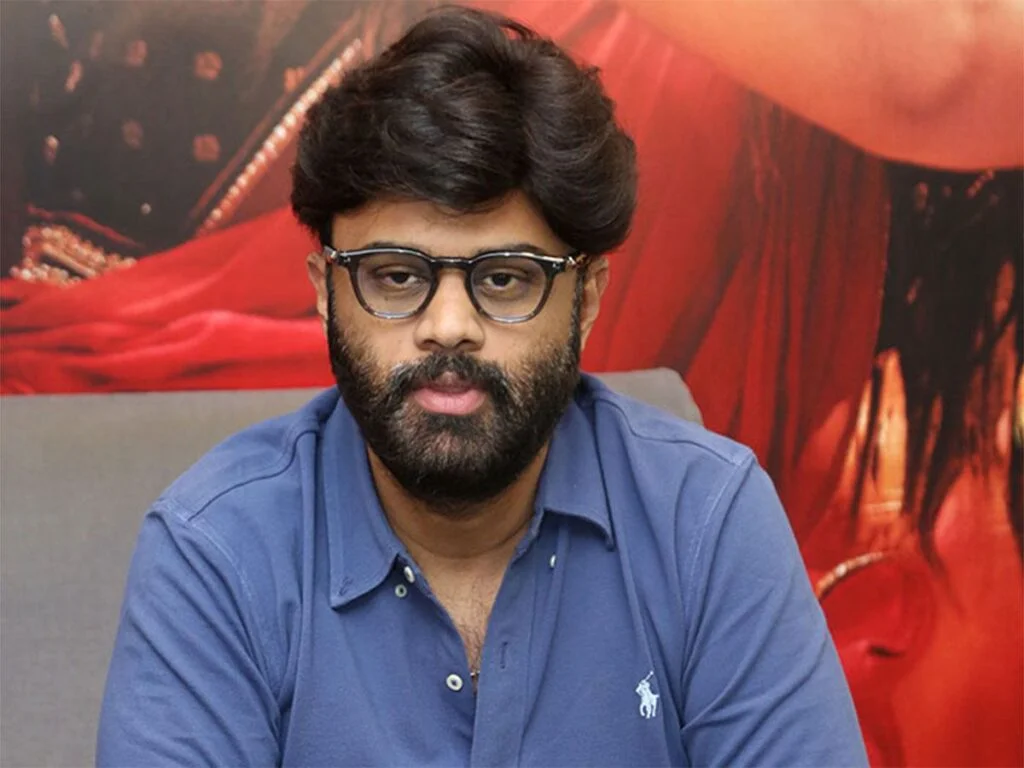Producer Naga Vamsi Defends Cinema Ticket Prices: A Case for Affordable Entertainment of Rs.1500 for Family

Table of Contents
Introduction: The Current Debate on Ticket Prices
The ongoing debate surrounding cinema ticket prices has become a topic of significant discussion among audiences, industry professionals, and producers alike. Recently, renowned producer Naga Vamsi stepped into the arena, articulating a defense for the current pricing structure while underscoring the importance of affordable entertainment options. His statements have sparked a variety of responses from the public, revealing a diverse range of opinions on how ticket prices affect access to cinema.
In today’s economic climate, families often find themselves navigating tight budgets, making entertainment expenses a critical concern. Ticket prices can vary immensely, and as the industry evolves, there are growing worries that rising costs may exclude certain demographics from enjoying films. This sentiment has led to discussions about finding a balance between sustaining the cinema industry and ensuring that entertainment remains one of the cheapest forms of enjoyment available to the masses.
Naga Vamsi’s involvement in this controversy not only highlights the ongoing struggles faced by the film industry to remain profitable but also emphasizes the necessity of considering the audience’s perspective. Many believe that cinema should be accessible, allowing people from all walks of life to experience the joy and cultural richness that films provide. This compels producers to justify their pricing strategies while remaining sensitive to the challenges families encounter in affording entertainment.
The broader implications of ticket prices echo sentiments surrounding affordability, accessibility, and even the perceived value of film as an art form. In this evolving discussion, it is paramount to reflect upon how the pricing framework set by producers like Naga Vamsi impacts the public’s relationship with cinema and what adjustments, if any, might foster greater public engagement. Thus, as we delve deeper into this analysis, it becomes clear that the controversy surrounding cinema ticket prices is far more complex than it may initially appear.
Naga Vamsi’s Perspective on Cinema Ticket Prices
Producer Naga Vamsi has recently taken a firm stand in defense of current cinema ticket prices, emphasizing their accessibility for families looking for affordable entertainment options. He argues that a family of four can partake in a cinema outing without substantial financial strain. To illustrate this point, Vamsi presents an analysis of the costs associated with a movie experience compared to other leisure activities. For instance, he draws attention to the total expenses incurred during a visit to the cinema—including ticket prices, refreshments, and transportation—suggesting that it still falls within an acceptable range when juxtaposed with outings to amusement parks or sports events, both known for their significantly higher costs.
In the ongoing discourse about the perceived high ticket prices in cinemas, Vamsi’s perspective shines a light on the competitive nature of entertainment industries. His assertion is that, when evaluated, cinema remains one of the cheapest forms of entertainment available. The producer posits that while ticket prices may have risen, the overall value provided through cinematic experiences justifies these increases. Many families may find that a day at the movies affords them hours of engagement, emotional connection, and cultural experiences that are unmatched by other forms of entertainment.
Additionally, Vamsi acknowledges the controversy surrounding cinema ticket prices, recognizing that economic fluctuations and market dynamics can influence public perception. He advocates for a balanced approach to addressing these concerns, maintaining that each ticket sale contributes significantly to the production cost of movies. By ensuring that ticket prices encourage attendance, there remains a viable future for filmmaking, enabling families to continue enjoying a medium that enriches social experiences. He calls for an understanding of the industry’s need to adapt while still preserving cinema as an enjoyable and accessible form of entertainment.
A Breakdown of Costs: Cinema vs. Other Entertainment Options
The debate surrounding cinema ticket prices, particularly in the context of Naga Vamsi’s defense of affordable entertainment, prompts a closer examination of how these costs measure up against other leisure activities. When evaluating the perceived value of cinema, it is crucial to place it alongside popular alternatives such as dining out, visiting amusement parks, and subscription-based streaming services.
One of the most immediate entertainment options many consider is dining out. A meal for two in a mid-range restaurant typically averages between $50 to $80, depending on the locale and menu choices. This expense does not cover additional costs such as tips, parking, or any beverages. In contrast, cinema ticket prices can often be significantly lower, with an average adult ticket costing around $12 to $15. For families or couples planning an outing, the cinema might emerge as a more affordable option than dining out.
Amusement parks further skew the cost comparison in favor of cinema. The price of admission for a single day at a well-known amusement park can range from $80 to upwards of $120 per person, not including food and souvenirs. Such expenses can quickly add up, particularly for families. In light of these figures, attending a film can be seen as one of the cheapest forms of entertainment available, revolving around a singular ticket price and minimal additional costs.
Furthermore, subscription services for streaming can appear cost-effective, with monthly rates generally ranging from $10 to $15. However, this doesn’t encapsulate the social experience that a cinema outing provides. The communal aspect of watching a film on the big screen often adds value that streaming cannot replicate. By analyzing these various options, one may conclude that cinema remains a valid and reasonably priced contender in the broader entertainment landscape, despite controversies surrounding ticket prices.
The Family Economy: Is Cinema Affordable for Everyone?
The affordability of cinema, particularly in the context of ticket prices, is a pressing issue for many families, especially those on tight budgets. As families navigate their financial realities, the accessibility of films varies based on a multitude of factors. For families with lower incomes, cinema has often been regarded as the cheapest form of entertainment, providing a temporary escape from daily struggles. However, rising cinema ticket prices can challenge this notion, raising questions about the overall affordability of such leisure activities.
Regional differences also play a crucial role in determining the economic feasibility of cinema for families. In urban areas where the standard of living is higher, ticket prices tend to be more expensive compared to smaller towns or rural regions, where cinema often serves as a community gathering place. This disparity influences family decisions regarding outings and recreational activities, potentially limiting access for those who may not be able to justify the expense. Additionally, demographic factors such as family size and income levels further complicate the affordability of cinema. Larger families may find it increasingly difficult to allocate funds for entertainment when considering the cumulative cost of ticket prices.
Moreover, the rising costs related to other essential needs, such as housing and groceries, may force families to prioritize spending. In this context, the family budget can significantly impact their ability to enjoy cinema experiences. Producer Naga Vamsi’s assertion regarding affordable entertainment highlights a debate worth exploring—while entertainment is vital, how affordable does it remain for the average family? Ultimately, comprehending these economic realities is essential for evaluating Vamsi’s claims about cinema ticket prices being accessible for all. As the controversy surrounding cinema affordability continues, a deeper understanding of the underlying socioeconomic factors will shed light on the broader implications for family entertainment choices.
Public Reactions: Social Media and the Controversy
The debate surrounding cinema ticket prices has ignited a fiery exchange on social media platforms, capturing the attention of the public following producer Naga Vamsi’s recent remarks. While many have rallied in support of Vamsi’s stance, citing the necessity of affordable entertainment options, others have taken to platforms like Twitter and Facebook to voice their concerns regarding rising costs associated with attending films.
Supporters of Vamsi argue that cinema remains one of the cheapest forms of entertainment, and it should be accessible to all. A Twitter user commented, “Naga Vamsi is right! Movies shouldn’t become a luxury. They are meant for everyone!” This sentiment was echoed by numerous posts, many of which included metrics revealing that a significant portion of moviegoers feel that current ticket prices are prohibitive. Reports showed that engagement on the topic surged by over 70% during the past week alone, underscoring the public’s vested interest in the controversy.
However, critics have expressed frustration, arguing that rising cinema ticket prices reflect larger economic trends that Vamsi’s comments fail to address. One critic tweeted, “It’s easy for producers like Naga Vamsi to talk about affordability when they don’t feel the pinch of rising costs like the rest of us.” Such counterarguments highlight a divide in public opinion, demonstrating that not all viewers agree with the notion that films should remain a low-cost entertainment option. Additionally, discussions have arisen around the impact of production quality and marketing costs on ticket pricing, complicating the conversation further.
This multifaceted discourse on social media illustrates the depth of sentiment surrounding Vamsi’s comments and the broader implications for the film industry. The contrasting opinions from supporters and critics reveal a complex dialogue on accessibility in cinema, inevitably pushing the conversation on cinema ticket prices into mainstream discussions.
The Role of Producers in Shaping Market Prices
The influence of producers, particularly figures like Naga Vamsi, plays a significant role in determining cinema ticket prices. Producers are essential stakeholders in the film industry, as they not only finance the production but also strategically position their films in the market. Ticket pricing is a multifaceted decision influenced by various factors including production costs, distribution expenses, and projected revenues. Understanding the delicate balance between these elements is crucial for producers in order to achieve profitability while ensuring their films remain accessible to the public.
Production costs form the foundation upon which ticket prices are built. A film’s budget includes expenses related to salaries, special effects, and marketing, which all contribute to the final cost that must be recouped through ticket sales. If a film requires heavy investment, the corresponding ticket prices might be adjusted to mitigate financial risk. However, this poses a challenge, as high cinema ticket prices can deter audiences, particularly in a market where consumers are increasingly seeking the cheapest form of entertainment. Here, the role of producers becomes paramount; they must find ways to balance economic sustainability with audience accessibility.
Market demand is another vital factor that influences pricing strategy. As trends in the entertainment industry shift, audiences have shown a growing preference for affordable options. When faced with controversy surrounding high ticket prices, producers like Naga Vamsi need to recognize the potential backlash from the public, and respond accordingly. This may involve conducting competitive analysis, examining the pricing strategies of rival films, and adjusting their own ticket prices accordingly to either capture a larger market share or maintain consumer trust. Consequently, producers are not only responsible for the financial health of their projects but also for ensuring that cinema remains a viable entertainment option for a broad audience.
Cultural Significance of Cinema: More Than Just a Price Tag
Cinema has long been regarded as a vital medium for entertainment and storytelling, serving as a reflection of society and a catalyst for cultural dialogue. The cultural importance of cinema extends beyond mere entertainment; it acts as a vehicle for shared experiences, identity formation, and the exploration of diverse narratives. The affordability of cinema, particularly through reasonable ticket prices, plays a crucial role in sustaining an engaged audience that can fully appreciate these cultural narratives.
The ongoing controversy regarding cinema ticket prices has significant implications for attendance and public perception of films as a critical element of cultural life. When ticket prices exceed what an average consumer can afford, it not only limits access but also relegates cinema to a luxury experience rather than a common cultural practice. This dynamic can lead to a disconnect between filmmakers and their audiences, diminishing the potential for films to resonate within the community. In contrast, when cinema ticket prices are set at accessible levels, it encourages greater participation, allowing a wider demographic to engage with diverse stories and perspectives.
Furthermore, cinema has historically been identified as the cheapest form of entertainment available to the masses. A well-priced ticket can open doors to rich cultural experiences that provoke thought, inspire creativity, and foster connection among viewers. As audiences gather to watch films, they not only consume stories but also engage in communal reflections that can influence societal attitudes and foster a sense of belonging. Therefore, the conversation around cinema ticket prices becomes not merely about economic factors but also about maintaining the cultural fabric that cinema represents.
In conclusion, the cultural significance of cinema cannot be understated, as it embodies the social values and shared experiences of a community. Ensuring that ticket prices remain affordable is fundamental in preserving cinema’s place in the cultural landscape and allowing all individuals to celebrate and partake in this vital form of art.
Comparative Entertainment: How Do Cinemas Stand?
When evaluating the cost of entertainment options, cinema ticket prices often spark debates about affordability. The entertainment landscape is diverse, encompassing several alternatives such as live sports events, theater performances, and subscription-based online content. Each of these options offers unique experiences and varying price ranges, which significantly contribute to consumer choices.
To start, live sports events typically feature ticket prices that can fluctuate significantly, often based on the popularity of the teams or the significance of the match. Fans might invest considerable sums for a prime seat at a high-stakes game, making it an expensive outing for families. In comparison, average cinema ticket prices provide a lower barrier to entry, allowing groups to enjoy a film without the large financial commitment that sports may demand.
Theater performances also present a point of comparison. While they boast cultural richness and can be truly captivating, the price points for attending a live show can often exceed those of cinema tickets, particularly for popular productions or high-caliber performances. Many families might find that the costs of attending a theater event can be challenging to justify as a regular entertainment choice.
Moreover, with the rise of streaming services, online content subscriptions have altered the dynamics of entertainment expenditure. A single subscription can grant access to numerous movies and series for a monthly fee, which may initially seem attractive compared to standalone cinema ticket prices. However, the experience of watching a film in a theater, surrounded by other viewers, offers a sense of community and excitement that many argue cannot be replicated at home.
In essence, while cinema ticket prices may appear high in isolation, they often stand as a competitive option when juxtaposed with alternative entertainment forms. This positions cinemas as one of the more accessible avenues for families seeking affordable leisure activities amidst a plethora of options.
Conclusion: Finding a Balance in Entertainment Pricing
The ongoing debate surrounding cinema ticket prices has evoked a spectrum of opinions, illustrating the complexity of the issue and the diverse perspectives regarding this form of entertainment. Producers, like Naga Vamsi, firmly believe in defending affordable cinema ticket prices as essential for making film-viewing accessible to a wider audience. This viewpoint underscores a genuine concern for families who may find it difficult to bear rising costs in an economy where entertainment options are increasingly viewed as luxury expenses.
As the cost of living escalates, the necessity for affordable entertainment options becomes increasingly apparent. The cheapest form of entertainment should remain within reach for families with different income levels, and cinema has been a cherished avenue for relaxation and enjoyment. However, the controversy arises when pricing strategies aim for maximum revenue without consideration for audience accessibility. A balance must be struck that allows theater owners to sustain their businesses while also ensuring that film-goers can afford a night out.
Potential solutions could involve flexible pricing strategies, such as discounted rates for families or promotional days where cinema ticket prices are significantly reduced. This ensures that everyone, irrespective of economic standing, can partake in the communal joy brought about by films. Moreover, collaborative efforts between producers, cinema operators, and local governments may yield innovative approaches to stimulate viewership while maintaining operational viability. By fostering dialogue and understanding among all parties involved, it is possible to navigate the intricacies surrounding cinema ticket prices and work towards a future where cinema remains an accessible source of entertainment for all.




Post Comment